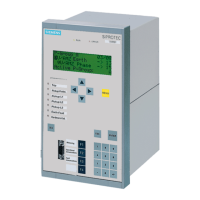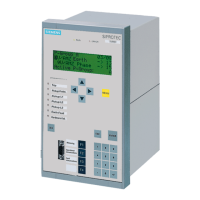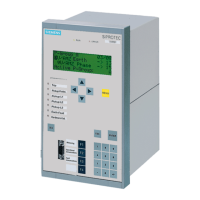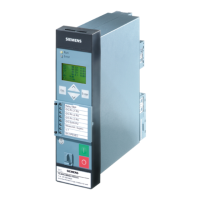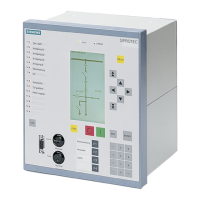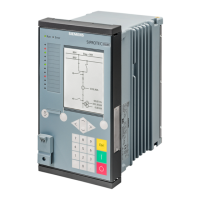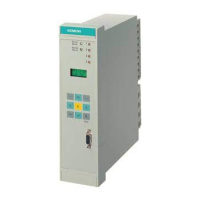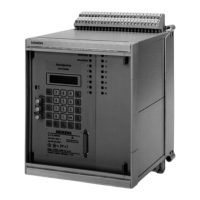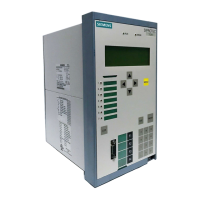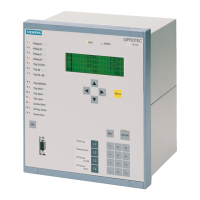2 Functions
66
7SD5 Manual
C53000-G1176-C169-1
For manual closure of the circuit breaker via binary inputs, it can be specified in
address 1151 MAN. CLOSE whether the integrated manual CLOSE detection checks
the synchronism between the busbar voltage and the voltage of the switched feeder.
This setting does not apply for a close command via the integrated control functions.
If the synchronism check is desired the device must either feature the integrated syn-
chronism check function or an external device for synchronism check must be con-
nected.
In the former case the synchronism check function must be configured as available, a
busbar voltage must be connected to the device and this must be correctly parame-
terized in the power system data (Section 2.1.2.1, address 210 U4 transformer =
Usync transf., as well as the the associated factors).
If no synchronism check is to be performed with manual closing, set MAN. CLOSE =
w/o Sync-check. If a check is desired, set with Sync-check. To not use the
MANUAL CLOSE function of the device, set MAN. CLOSE to NO. This may be reason-
able if the close command is output to the circuit breaker without involving the 7SD5,
and the relay itself is not desired to issue a close command.
For commands via the integrated control (local control, DIGSI, serial interface)
address 1152 Man.Clos. Imp. determines whether a particular close command via
the integrated control function should be treated by the protection (like instantaneous
re-opening when switching onto a fault) like a MANUAL CLOSE command via binary
input. This address also informs the device for which switchgear this applies. You can
select from the switching devices which are available for the integrated control.
Choose that circuit breaker which usually operates for manual closure and, if required,
for automatic reclosure (usually Q0). If none is set here, a CLOSE command via the
control will not generate a MANUAL CLOSE impulse for the protection function.
Three-pole
Coupling
Three-pole coupling is only relevant if single-pole auto-reclosures are carried out. If
not, tripping is always three-pole. The remainder of this margin heading section is then
irrelevant.
Address 1155 3pole coupling determines whether any multi-phase pickup
leads
to a three-pole tripping command, or whether only multi-pole tripping
decisions result
in a three-pole tripping command. This setting is only relevant for versions with single-
pole and three-pole tripping and is only available there. It does not have an impact on
the differential protection since pickup and tripping are equivalent. The time overcur-
rent protection function, however, can also pick up in the event of a fault occurred
outside the protected object, without tripping.
More information on the functions is also contained in Section 2.23.1 Pickup Logic for
the Entire Device.
With the setting with PICKUP every fault detection in more than one phase leads to
three-pole coupling of the trip outputs, even if only a single-phase earth fault is situated
within the protection zone, and further faults (e.g. caused by overcurrent), only affect
the higher zones, or are located in the reverse direction (distance protection). Even if
a single-phase trip command has already been issued, each further fault detection will
lead to three-pole coupling of the trip outputs.
If, on the other hand, this address is set to with TRIP (default setting for differential
protection), three-pole coupling of the trip output (three-pole tripping) only occurs
when more than one pole is tripped. Therefore, if a single-phase fault occurs within the
protected zone and a further fault outside of it, single-pole tripping is possible. A further
fault during the single-pole tripping will only lead to a three-pole coupling, if it occurs
within the protected zone.
www . ElectricalPartManuals . com

